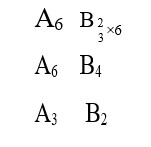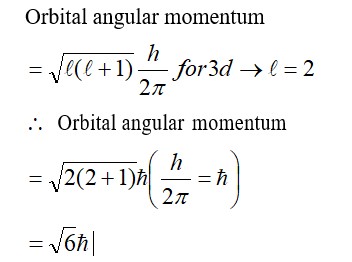For water at 100°C and 1 bar, ΔᵥₐₚH - ΔᵥₐₚU = _______ × 10² J mol⁻¹ (Round off to the Nearest integer) [Use: R = 8.31 J mol⁻¹ K⁻¹] [Assume volume of H₂O(l) is much smaller than volume of H₂O(g). Assume H₂O(g) can be treated as an ideal gas]
For water at 100°C and 1 bar, ΔᵥₐₚH - ΔᵥₐₚU = _______ × 10² J mol⁻¹ (Round off to the Nearest integer) [Use: R = 8.31 J mol⁻¹ K⁻¹] [Assume volume of H₂O(l) is much smaller than volume of H₂O(g). Assume H₂O(g) can be treated as an ideal gas]
-
1 Answer
-
H? O (l) → H? O (g)
ΔH° = ΔU° + ΔngRT
ΔH° - ΔU° = ΔngRT
= 1 × 8.31 × 373
= 3099.63 J/mol
= 30.9963 × 10² J/mol
≈ 31 × 10² J/mol
Similar Questions for you
Kindly go through the solution
(1) [Ni (NH3)6]+2 → Ni+2 → d8, C. No. = 6,
SP3d2, Para
(2) [Co (H2O)6]+2 → Co+2 → d6, C. No. = 6
d2sp3, Dia
(3) [Ti (H2O)6]+3 → Ti+3 → d1, C. No. = 6
d2SP3, Para
(4) [Co (NH3)6]+3 → Co+3 → d5, C. No. = 6
d2sp3, Para
Taking an Exam? Selecting a College?
Get authentic answers from experts, students and alumni that you won't find anywhere else
Sign Up on ShikshaOn Shiksha, get access to
- 65k Colleges
- 1.2k Exams
- 679k Reviews
- 1800k Answers



